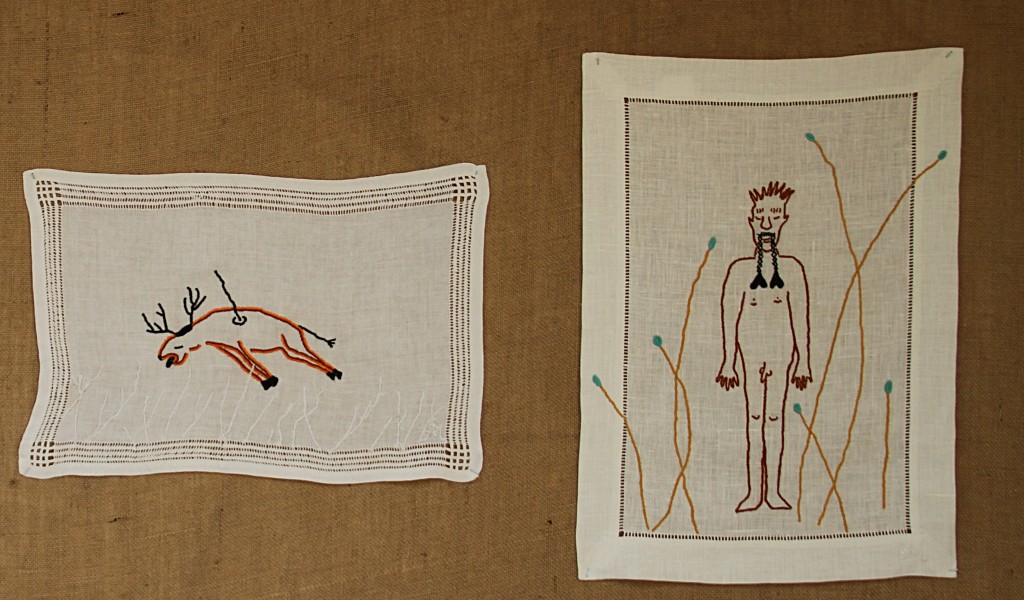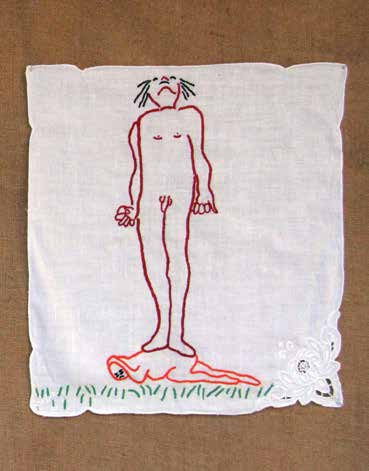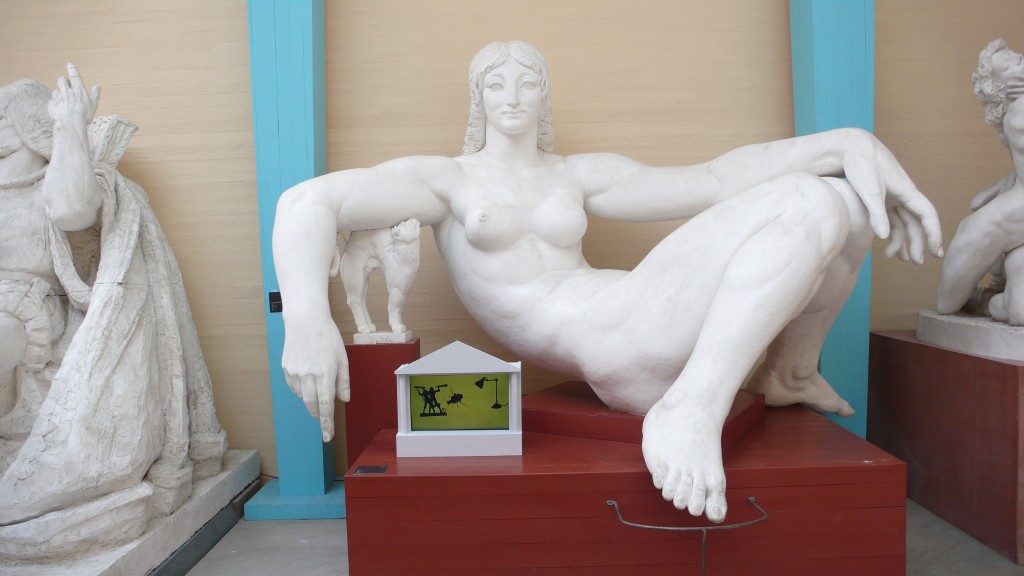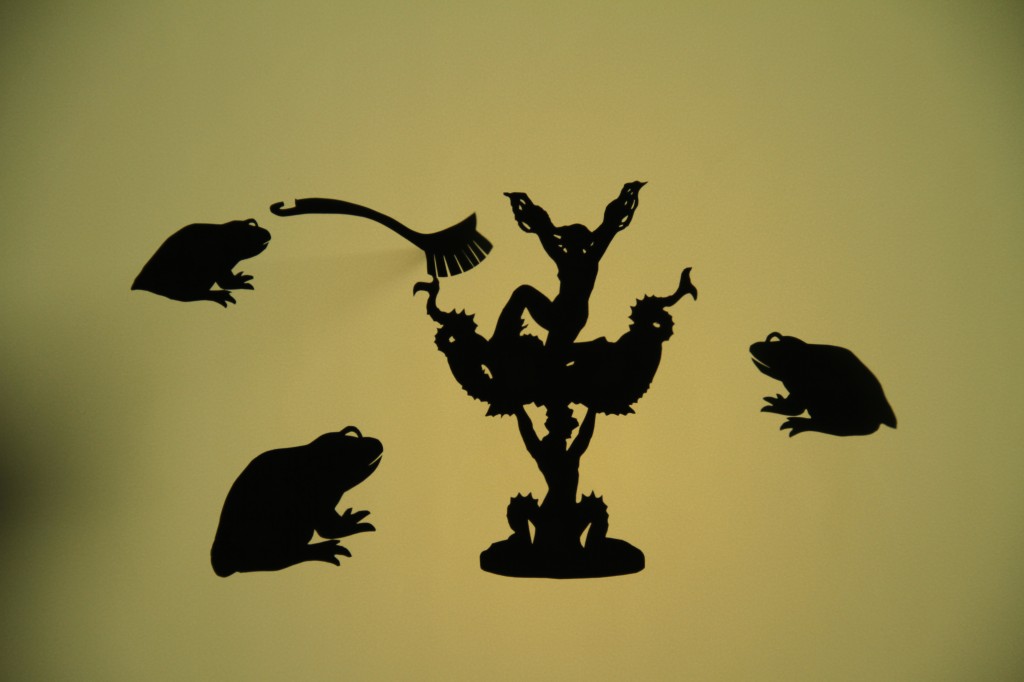A FRIEZE TO RUDOLPH
I was born in 1952 and my entire life has been connected with the North Sealand part of Denmark, so Rudolph Tegner’s universe has helped to shape my artistic view
His dramatic creations occupied the child’s mind – and is still present in me as an adult.
Tegner is powerful and his sculptures are heavy, thus I have chosen a form of expression that opposes him, i.e. embroidery. It is light, feminine and in a much smaller scale. I want to embroider frieze to Rudolph. 




In ancient times a frieze was also called “zofaros” (image carrier), and this is what I will be. I will carry images of my universe into Tegner’s universe. I will embroider shapes that emerged in me, based on Rudolph Tegner’s sculpture. I will describe the images that have stayed with me since Rudolph created his pictures. I will speak to Rudolph through my pictures.
In the artwork creation process, I often experience the instant feeling of accomplishment: Right now, just there, I just hit the right spot. And then, a moment later I feel: No, it was not just that, but the next work will certainly accommodate everything, but of course it does not always go like this. The quest for perfection is a driving force in art work. I can very clearly see how Tegner fought from one sculpture to the next in search of the right expression. In my world, Tegner’s process and his quest for the ideal is transformed into a wide range of stories.
I have chosen embroidery as a mean of expression. To embroider by hand is a very forceful process of arranging thousands of stitches into the make of one tiny figure. As soon as the figure emerges, immediately there is a need to add a new character and a new story. My work is like a cartoon.
Spring cleaning, a shadow play made in collaboration with Nina Maria Kleivan
This piece is a shadow play, where Tegner’s striking sculptures, often over-sized, are now scaled down to the puppet theatre’s tiny size. And what happens when the characters are scaled down? When they are injected with a new life through sticks and wires? Those voluptuous characters are not just scaled down, they are also reduced to two dimensions and they appear black against the the foreground as a strong contrast to the museum’s voluminous white plaster sculptures. What happens when the characters are taken out of the context, out of the museum’s space or out of the surrounding park, and are placed in this small theater?
In this way the visualization and transformation of Tegner’s works is accomplished by the reduction and encounter with unexpected elements.The huge and violent story becomes a small and touching story.








